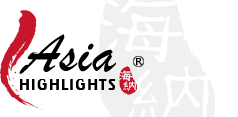As someone who has spent time in Chiang Mai during different seasons, I've gathered many insights on the best and worst times to visit this beautiful city. From my personal experiences, I'll guide you through the seasons, festivals, and essential tips to help you plan the perfect trip to Chiang Mai.
Best Time to Visit Chiang Mai
The best time to visit Chiang Mai is between November and February, when the weather is most comfortable. During this period, you can expect clear skies, cooler temperatures, and minimal rainfall.
If you're planning to visit this city just once, I highly recommend timing your trip to coincide with the Yi Peng Lantern Festival, typically held in November. The city transforms during this magical festival, with thousands of lanterns lighting up the night sky, making it an unforgettable experience.
However, if you're looking for mild weather without the crowds, I suggest the end of October or early March. During these months, the weather is pleasant, the tourist crowds are thinner, and you might even snag discounts on hotels and flights.
Chiang Mai Weather: Three Distinct Seasons

Chiang Mai, nestled in Northern Thailand, has a distinct climate that sets it apart from the tropical weather of Bangkok or the islands in the south.
While Bangkok and the islands tend to be hot and humid year-round, Chiang Mai enjoys cooler temperatures, especially during the dry season. In December and January, the temperature can drop to a comfortable 15-20°C (59-68°F) at night, providing a welcome break from the constant humidity found in Bangkok and the islands.
Chiang Mai experiences three main seasons: dry, hot, and wet, with an additional phenomenon known as the burning season (February to April), which heavily influences air quality and visibility. Here's a breakdown:
- Dry season (November to February): The best time to visit, with cool and comfortable temperatures.
- Hot season (March to May): Expect scorching heat, making outdoor activities in the midday sun quite uncomfortable.
- Wet season (May to October): Rainy days and occasional floods, but also a great time for lush green landscapes and fewer crowds.
- Burning season (February to April): Poor air quality due to agricultural fires, which makes it the worst time for outdoor activities.
Dry and Cool Season (November-February) – The Best Time to Visit Chiang Mai

The dry season is undoubtedly the best time to visit Chiang Mai. Temperatures during this time are mild, with daytime highs ranging between 25-30°C (77-86°F) and cooler evenings as low as 13°C (55°F). This makes it ideal for outdoor activities such as trekking, visiting temples, or exploring elephant sanctuaries.
If you travel up to the mountains, for example, Doi Inthanon, you might experience temperatures as low as 3°C (37°F). So it is advisable to bring a light jacket.
 Yi Peng Festival
Yi Peng FestivalThis season also brings a series of exciting festivals, the Yi Peng Lantern Festival in November, the Chinese New Year in January, and the Chiang Mai Flower Festival in February, offering a memorable cultural experience.
This period is the peak season for travel, so expect higher costs for hotels and flights.
Hot Season (March-May)
 Wat Chedi Luang
Wat Chedi LuangThe hot season can be brutal. Temperatures regularly reach above 35°C (95°F), and in the peak months of April and May, it can reach 40°C (104°F) . The intense sun makes it difficult to be outside for long periods during the day.
If you plan to visit during this season, prepare to venture out early in the morning or after sunset, when the heat is more bearable. Activities like temple visits, walking tours, or hikes should be reserved for these cooler parts of the day.
Wet Season (May-October) – Good Time to Visit Chiang Mai

The wet season is often misunderstood, so don't be discouraged just because it's called the rainy season. While it does bring regular rain, the downpours are usually heavy but short-lived, typically occurring in the afternoon or evening and lasting less than 30 minutes. They won't disrupt your activities.
The landscape during this season is lush and green, making it an ideal time for nature lovers and trekkers. You'll have a chance to see Chiang Mai's waterfalls in full force, and the rice paddies are vibrant and lush.
However, if you're visiting during the wet season, avoid September, the wettest month, as it is prone to flash floods, especially in rural areas (where some elephant sanctuaries are located) and trekking routes like those in Doi Inthanon. This also occurred in downtown Chiang Mai in September 2024, when I happened to be there.
Otherwise, the rainy season offers fewer crowds, making it a great option for those looking to explore at their own pace.
Burning / Smoky Season (February-April) – The Worst Time to Visit Chiang Mai
The burning season occurs every year from February to April, with the worst pollution in March. During this time, farmers burn fields to clear them for new crops, which causes heavy air pollution and a thick haze over the city.
If you're sensitive to pollution, this is the worst time to visit Chiang Mai. The sky is often hazy, making it difficult to take clear photos. You'll also notice the smell of burning crop residues in the air. After spending a day outdoors, you might find your clothes and face covered in dust.
Chiang Mai Festivals
Chiang Mai is home to some of Thailand's most vibrant and iconic festivals, each offering a unique experience:
Yi Peng Lantern Festival (November): This is the highlight of the year! The city lights up with thousands of lanterns being released into the sky, along with lively parades and cultural performances. It's an unforgettable experience for anyone visiting during this time. In 2025, Yi Peng falls on November 5th and 6th, so be sure to book your tickets in advance.
 Yi Peng Festival
Yi Peng FestivalCAD New Year Countdown: A new addition to Chiang Mai's festival scene, this event features large-scale fireworks and a magical sky lantern release to ring in the new year. Book your tickets.

Chiang Mai Flower Festival (February): This is the time when the city is at its most colorful. The streets come alive with stunning floral displays, floats, and traditional dances. If you love flowers, this is the perfect time to visit.
Songkran (Thai New Year) (April): Known for its epic water fights, Songkran is chaotic but incredibly fun. Expect street parties, splashing water, and celebrations all around the city. It's a time for excitement, laughter, and soaking wet fun!

These festivals can coincide with higher hotel prices and crowded streets, but they offer a chance to experience Chiang Mai's rich cultural heritage. Be sure to book accommodations in advance if you're planning to visit during one of these events.
Chiang Mai Weather By Month
Here's a quick overview of Chiang Mai's weather by month, so you can plan accordingly:
| Month | Temperature (°C) | Rainfall (mm) | Notes |
| January | 18-25 | 10 | Cool and pleasant |
| February | 20-30 | 30 | Great for outdoor activities |
| March | 25-35 | 50 | Hot and smoky, avoid outdoor activities during the day |
| April | 28-36 | 70 | Peak heat, Songkran celebrations |
| May | 25-35 | 150 | Start of the rainy season |
| June | 24-32 | 200 | Heavy rain in the afternoons |
| July | 24-32 | 230 | Best for green landscapes |
| August | 24-32 | 250 | Rainy season peaks |
| September | 24-31 | 300 | Avoid due to flooding risks |
| October | 22-30 | 200 | Great time to visit, fewer tourists |
| November | 20-30 | 50 | Ideal time, cool and dry |
| December | 15-25 | 10 | Best time to visit, cool and pleasant |
Chiang Mai Packing: What to Bring to Chiang Mai
What to pack depends on the season, so here's a breakdown:
- Dry Season (November-February): Light layers for daytime, a jacket for cool evenings, sunscreen, and a hat.
- Hot Season (March-May): Cool fabrics, sunscreen, water bottle, sunglasses, and a fan.
- Wet Season (May-October): Waterproof jacket, quick-dry clothing, an umbrella, and sturdy shoes for slippery conditions.
- Burning Season (February-April): Face mask (due to smoke), and avoid outdoor activities during the worst air quality periods.
FAQ about Chiang Mai Weather
1. What is the wettest month in Chiang Mai?
September is the wettest month, with heavy rainfall and flood risks.
2. What are the coldest months in Chiang Mai?
December and January are the coolest months, with temperatures sometimes dropping to 15°C (59°F) at night.
3. What are the hottest months in Chiang Mai?
March to May are the hottest months, with temperatures often exceeding 35°C (95°F).
4. What are the most expensive months in Chiang Mai?
November and February, especially during festivals like Yi Peng and New Year. So expect higher prices for accommodation, flights, and activities.
5. What are the cheapest months in Chiang Mai?
May to October, during the wet season, are generally the cheapest months for hotels and flights.
6. What are the best months for outdoor activities in Chiang Mai?
The best months for outdoor activities like hiking, trekking, and sightseeing are from November to February when the weather is cooler and more comfortable.
7. Is it safe to visit Chiang Mai during the rainy season?
Yes, the rainy season doesn't last all day and can be a great time to visit. Just be cautious of flooding, particularly in remote areas.
Travel Chiang Mai with Us
Whether you're looking to experience the best of Chiang Mai or explore Thailand's hidden gems, we can tailor-make a trip that fits your needs and interests perfectly. Contact us today to start planning your unforgettable adventure!
Get Inspired with Some Popular Itineraries
At Asia Highlights, we create your kind of journey — your dates, your destinations, at your pace. You can have any trip tailor made for your travel.



